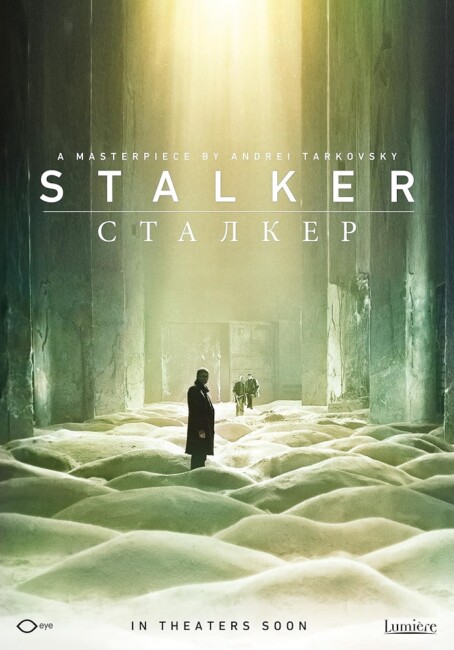USSR. 1979.
Crew
Director/Art Direction – Andrei Tarkovsky, Screenplay – Arkady Strugatsky & Boris Strugatsky, Based on Their Novel Roadside Picnic (1972), Photography (colour & b&w)– Alexander Knyazhinsky, Music – Eduard Artemyev. Production Company – Mosfilm/Second Artists Association.
Cast
Aleksandr Kaydanovskiy (Stalker), Anatoliy Solonitsyn (Writer), Nikolay Grinko (Professor), Alisa Freyndlikh (Stalker’s Wife), Natasha Abramova (Monkey)
Plot
Twenty years ago, an area of countryside became mysteriously affected, possibly from outer space. This has been called The Zone and strange phenomena occur inside. Walls have been erected around the area, guarded by military. Inside The Zone there is reputed to exist The Room where one’s innermost desires might be granted. One man acts as a Stalker who guides others into The Zone. Stalker has been jailed for his illicit activities and his wife is not happy him leaving her and their daughter again to lead another expedition into The Zone. Stalker agrees to guide a cynical writer who says he is seeking inspiration and a physics professor into The Zone. They smuggle in through the train lines and enter an abandoned wasteland that is returning to nature. Stalker warns that the area is filled with shifting and dangerous phenomena. Though The Room is only a few hundred metres directly ahead, they must take a circuitous route to avoid the unseen traps. The journey is a peril-filled one that also becomes threatened by the writer’s carefree recklessness.
Andrei Tarkovsky (1932-86) was the greatest of all Russian directors and among the film greatest directors of the 20th Century. All of his reputation rests on only seven films in total. Tarkovsky started out as an artist but joined the Soviet national film studio Mosfilm where he made his first film Ivan’s Childhood (1962), followed by Andrei Rublev (1966), historical works that experienced some problems with the authorities. Tarkovsky’s reputation grew with the SF film Solaris (1972) and Stalker, both of which received a worldwide release, as well as the autobiographical works Mirror (1975) and Nostalghia (1983), Tarkovsky’s final film, made after he had become a Soviet dissident, was another fantastical work The Sacrifice (1986) where Max Von Sydow prays to turn back the nuclear apocalypse.
Tarkovsky’s works are not standard dramatic works and defy anything familiar to commercial filmmaking. As is the case here, shots can often go on for minutes at a time. Tarkovsky’s films are contemplative and deeply philosophical. Key to him was a sense of spirituality – one reading of Stalker is to see it as a film about faith in a harsh and desolate world. Tarkovsky also stated that nature was a key element and almost another character to his films – here and in Solaris we see that nature is also very much a world where the alien and inexplicable hides in its midst.
Stalker is adapted from a novel by the writing duo of brothers Arkady Strugatsky (1925-91) and Boris Strugatsky (1933-2012). The brothers grew up during the infamous Siege of Leningrad during World War II, Arkady went on to train as a linguist and Boris in physics, astronomy and computer engineering before they switched to become full-time writers. The Strugatskys began publishing with The Land of Crimson Clouds (1959) and produced a number of SF works such as Hard to Be a God (1964), Snail on the Slope (1968), Tale of the Troika (1968) and The Dead Mountaineer’s Hotel (1970), among others. Many of these were adapted into English and there have several been film adaptations of their other works (see below).
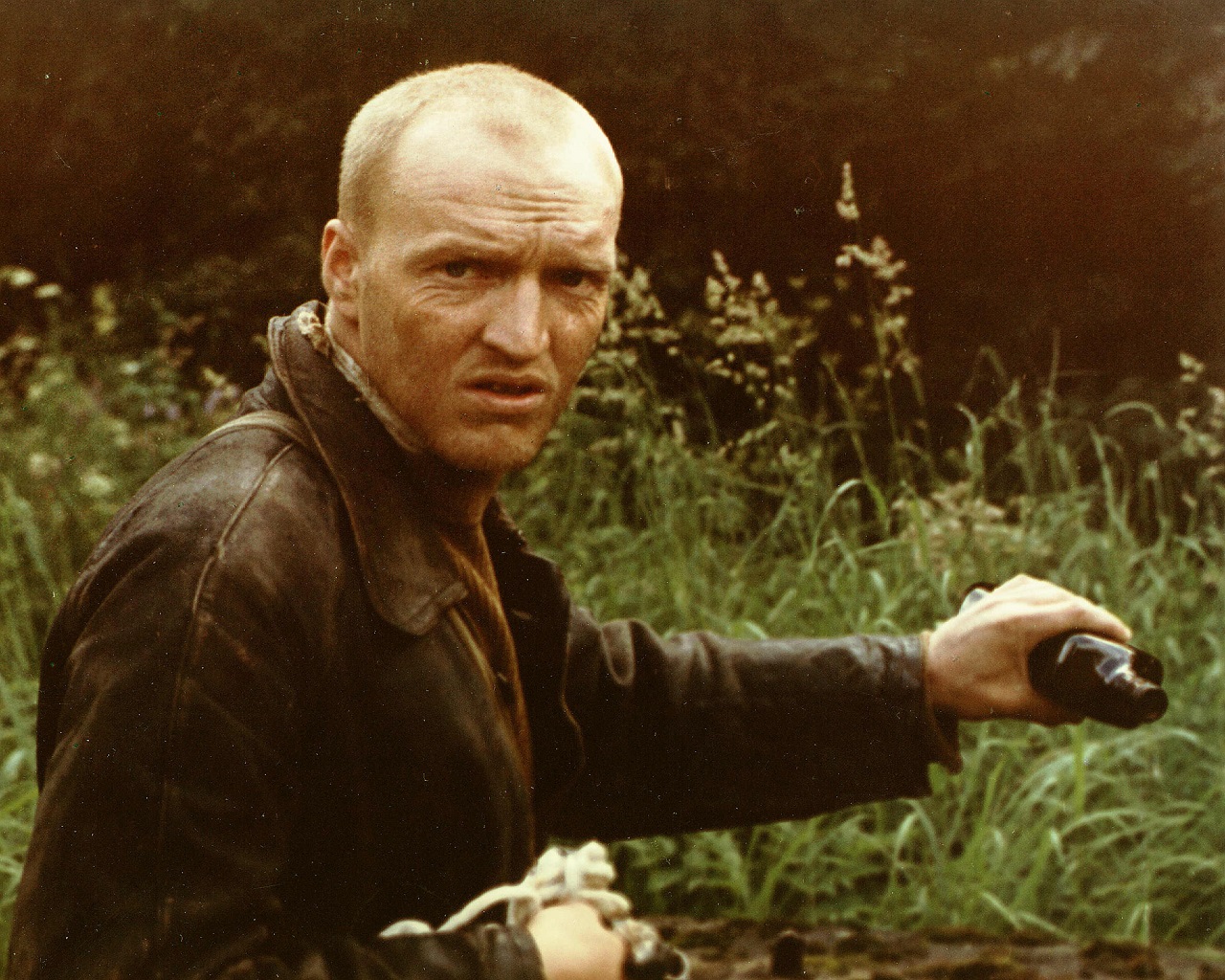
Stalker is adapted from the Strugatskys’ novel Roadside Picnic (1972). The book is a much more overt SF work than the film is. In the book, The Zone is filled with gravity traps, a slime that causes bones to dissolve and strange artefacts that are sought by collectors, while in the first section the group venture into The Zone in a flying machine. In the book, explanations for The Zone are more clearly said to be alien in origin. Indeed, the book’s title derives from this in a section where it is speculated that the phenomena and artefacts of The Zone are akin to a ‘roadside picnic’ where visiting aliens have left garbage and leftover items behind and of humanity akin to ants crawling across trying to make sense of this. By contrast, the film leaves any speculation as to causes as a big question mark. In the book, there are also other Zones around the world, as well as more depiction of the society of illegal trade and government imposition that has grown up around The Zones.
The film has essentially been taken from the book’s fourth section where the stalker Red Schuhart (who becomes the eponymous stalker in the film) leads an expedition on foot into The Zone in search a golden sphere that can grant wishes (which becomes The Room in the film). One other holdover from the book is Stalker’s daughter, who in the book has been born with fur all over her body as a result of his various trips into The Zone, whereas here she is crippled, which leads to the remarkable final image of the film. Andrei Tarkovsy and the Brothers Strugatsky have in essence taken the core of the book, abandoned all overt SF trappings and rendered an infinitely more subtle film in the process.
Stalker has some of the most stunning monochrome photography I have ever seen in a film. This gives incredible texture to the rundown world outside The Zone from the dreary apartment where Stalker and his wife live to the grain and polish on the floor of the bar, the broken windows, the railyards covered in mist and industrial back alleys filled with puddles of water. The film was shot near two abandoned power plants in Talinn, Estonia. (Upriver from the location was a chemical plant that was spilling effluent into the river – it is theorised that this was what caused Tarkovsky, his wife and others in the crew to die of cancer).
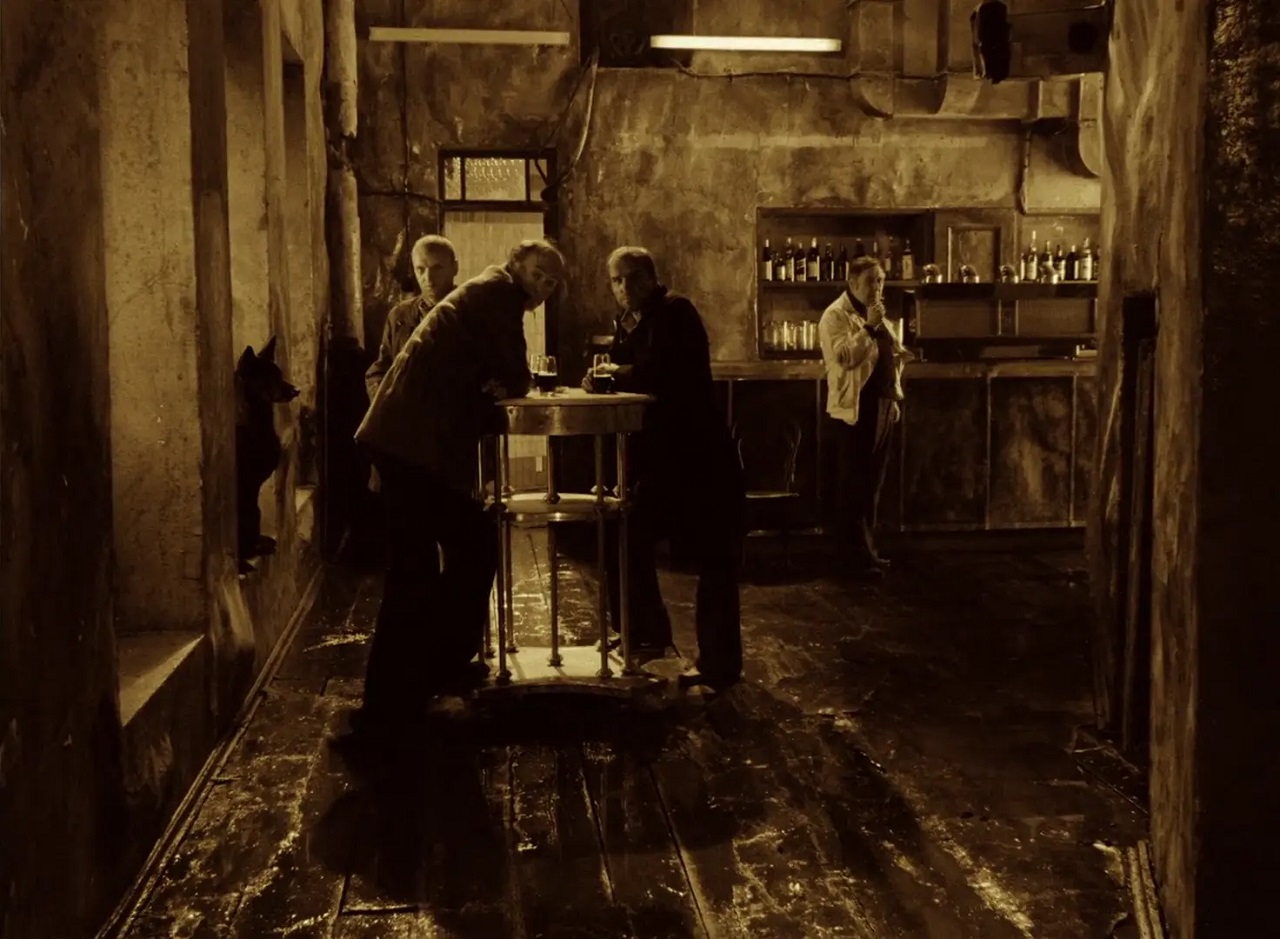
It is 38 minutes before we leave this monochrome everyday world and enter into The Zone whereupon the film makes an abrupt transition into colour. The world inside The Zone comes with an extraordinary abandoned beauty – overgrown train tracks, toppled telephone poles that trail off into perspective, houses in the midst of overgrown fields. Tarkovsky films closeups drifting along river beds filled with syringes, springs, abandoned machine parts, floating pieces of paper. And the peculiarities – flowers that have no smell; the unearthly howl of some animal that can be heard and later a dog that joins the party; a field with rusted abandoned vehicles with the decayed corpses of soldiers still holding their rifles sitting inside – adds to the intangible sense of mystery.
Amidst this, Tarkovsky creates something fascinating out of nothing. The journey through The Zone is filled with urgent warnings imparted by Stalker about deadly traps and shifting topography, people disappearing if they try to retrace their footsteps. Stalker has to toss nuts tied in pieces of cloth ahead to test the terrain – we never find out why but according to the book this is to find if there are areas where gravity is absent. The Room is pointed out – a house only a hundred yards across the other side of the field and Writer recklessly tries to walk directly there before being warned to turn back by a voice, and Stalker tells them how the only way they can take there is an indirect route.
All of this only occurs on a purely mundane level. It is not until the 105 minute point before we get the first overt manifestation of something fantastical when a bird flies through the room filled with sand and abruptly vanishes. In another room they enter, the electricity mysteriously comes on and then a telephone rings – and moreover permits calls to areas outside The Zone.
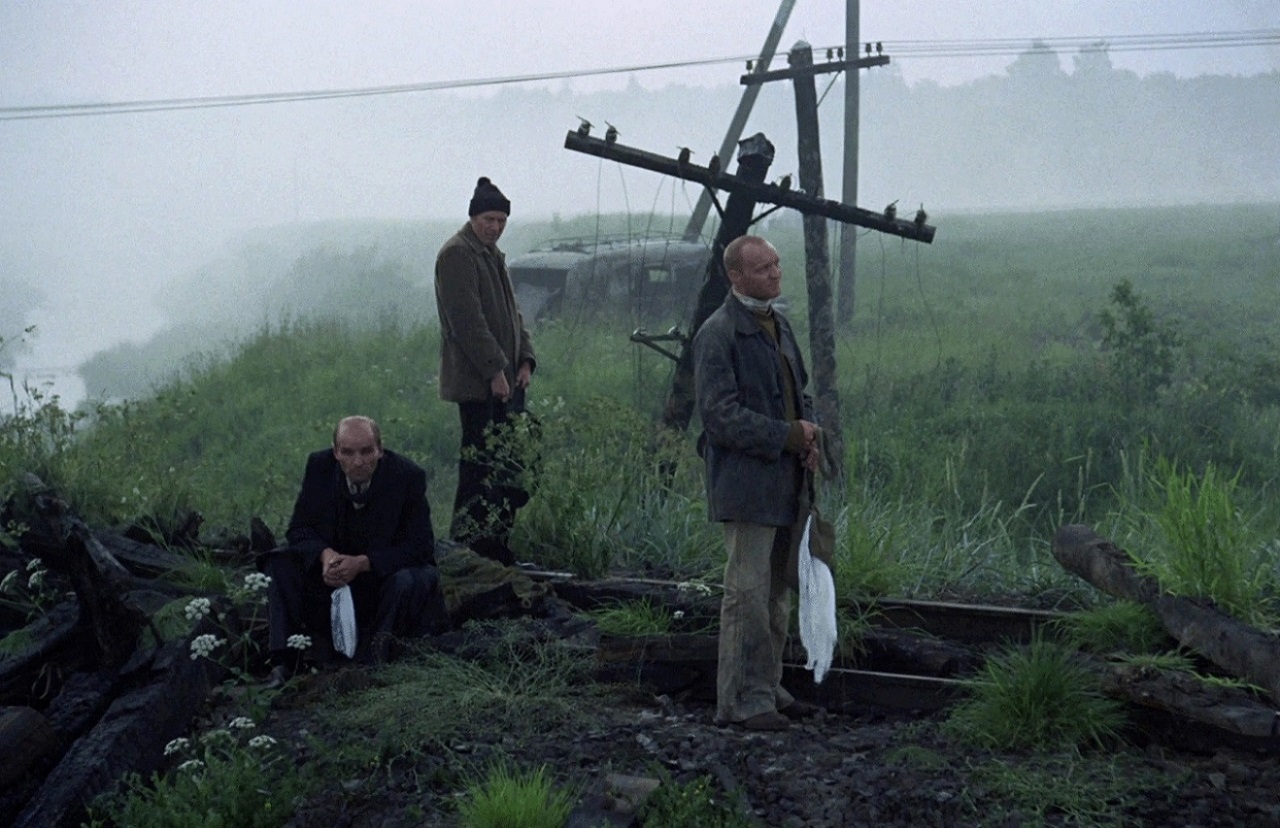
All three characters are allegorical ones who have no names other than their professions. Stalker represents blind, often simple-minded faith in the wonder of the miracle that is The Zone. The most well developed character is that of Writer, the worldweary cynic – “My consciousness wants the triumph of vegetarianism, my subconscious longs for a juicy steak,” he states at one point. He’s also a writer who hates to write because his audiences devour and tear his work apart. You wonder whether the Strugatskys were writing from real life or just creating a fantasy where they also have the writer deploring the fame, fortune and women that comes with his success. The scientist is a more muted character, although comes to a terrible realisation towards the end that The Zone must be destroyed with a nuclear warhead to prevent its power from ever being used. The Strugatskys (or Tarkovsky) are scathing of both the writer and scientist – as Stalker says at the end: “They call themselves the intelligentsia. Writers! Scientists! They don’t believe in anything. Their capacity for faith has atrophied though lack of use.”
Thus it is The Zone becomes a stunning metaphor for faith – an issue that was very personal to Tarkovky. For him, The Zone is that which lies in the real world with almost indistinguishable difference but where hopes and the miraculous are very tangible items in a morally downbeat world. And yet for all that, Stalker is a film where everybody quests for The Zone but nobody has the courage to enter it out of fears what it will reveal about their greatest desires. There is the haunting little story about Stalker’s mentor Porcupine, who went to The Room to wish for his brother’s healing, but hung himself a week later after finding that The Room’s granted him his real heart’s desire – a pot of gold. Stalker is the least wretched of the trio in the end, but he is the one who has no ideal but the existential belief in faith itself. Like Kierkegaard, he prefers belief in faith existential, that travelling hopefully is better than arriving.
Maybe on a macrocosmic level Tarkovsky is also making his film about the difficulty of maintaining faith while living in the Soviet Union – in seeing the Zone, which represents faith as an area guarded by armed soldiers where one can only enter into and engage with it in secrecy. For such a bleak film, the ending comes beautifully hopefully with the long shot showing Stalker’s daughter pushing glasses across a table with the powers of her mind. Maybe it is Tarkovsky’s final enigmatic comment, to say that in a world where all hope is lost maybe there is still our children.
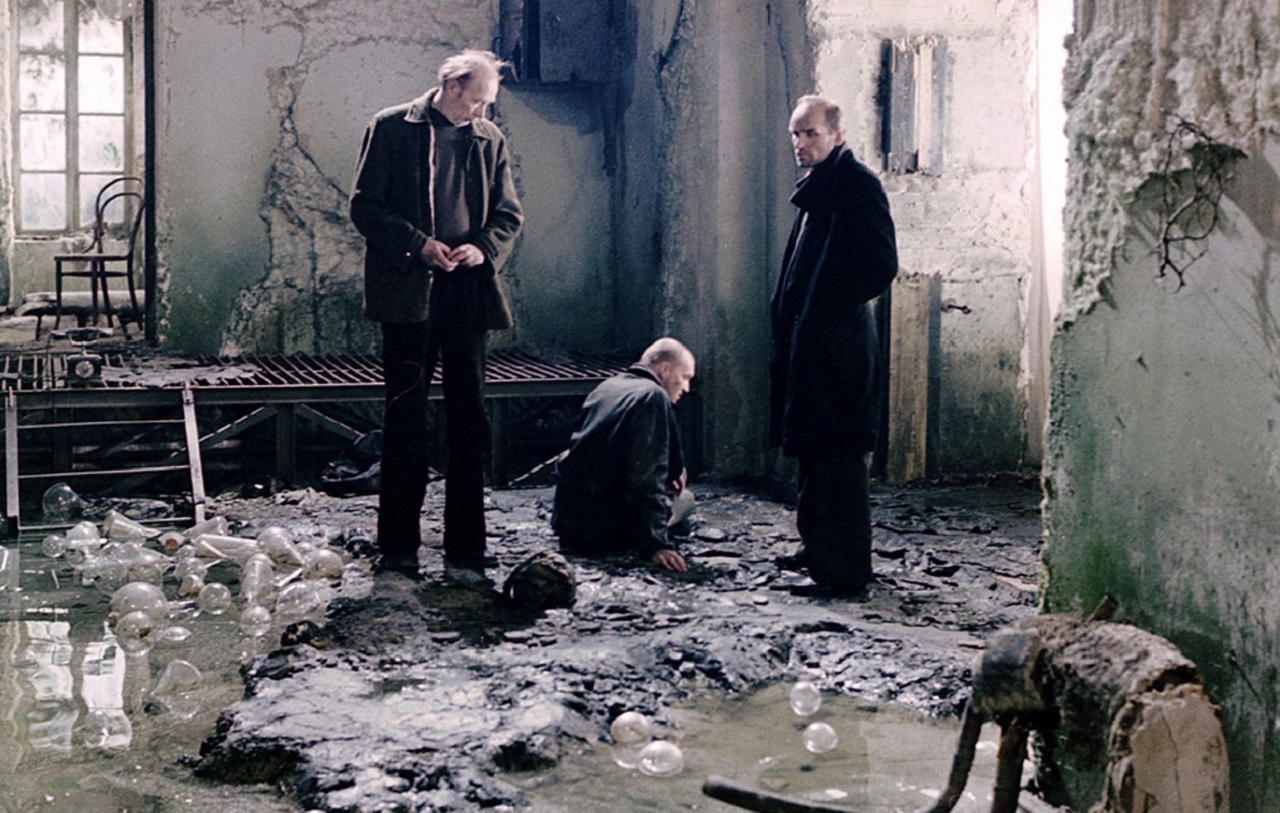
Of course, several years later, Stalker had uncanny parallels with the nuclear accident at Chernobyl and the establishment of the Chernobyl Exclusion Zone where the town of Pripyat in what is now modern day Ukraine was walled off and abandoned and allowed to grow over much like The Zone here. Indeed, when an illegal tourist industry popped up offering tourist ventures into the exclusion zone, the guides who took tourists in were given the names of ‘stalkers’.
Stalker has had considerable influence on a number of other films. The most obvious of these was The Last Loner (2019), a Polish film that made substantial homage to Stalker and Roadside Picnic and is actually shot inside the Chernobyl Exclusion Zone. You could cite other works such as Incident at Raven’s Gate (1988), Cube (1997) and sequels, Monsters (2010), YellowBrickRoad (2010) and Annihilation (2018).
The Strugatsky Brothers’ books have produced a number of film adaptations with other works such as The Dead Mountaineers’ Hotel (1979), The Sorcerers (1982), Days of Eclipse (1989), Hard to Be a God (1989), The Temptation of B. (1991), Inhabited Island (2008) and its sequel Inhabited Island: Rebellion (2009) and Hard to Be a God (2013), as well their having written the screenplay for the nuclear holocaust film Letters from a Dead Man (1986).
Trailer here
Full film available here


